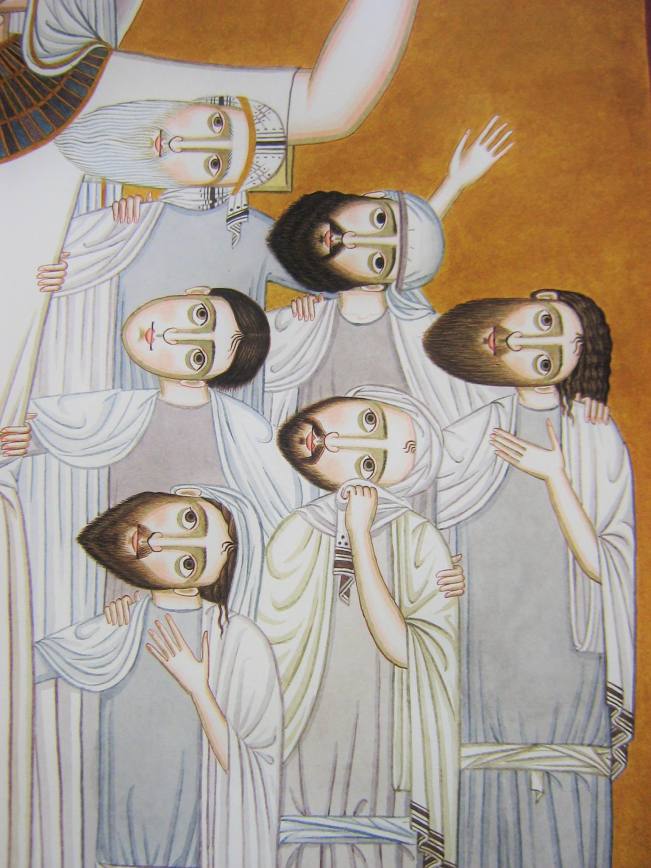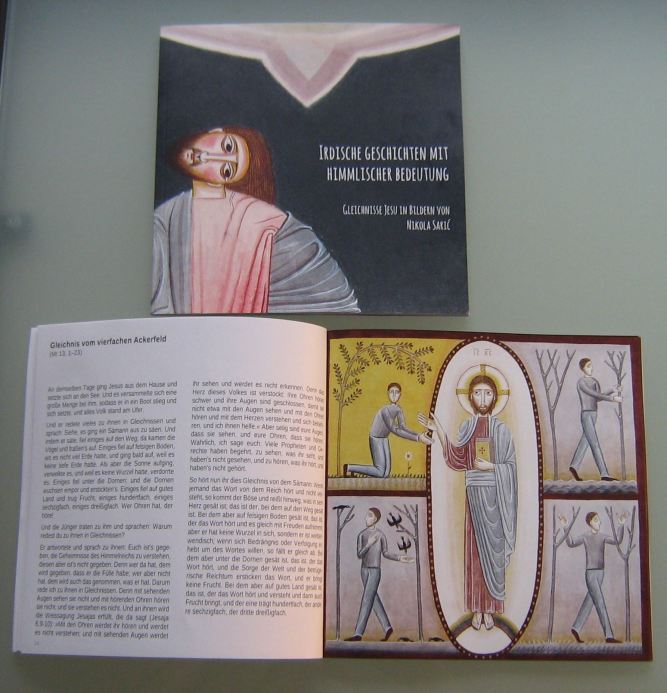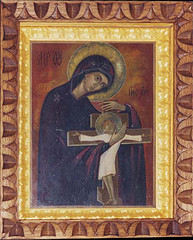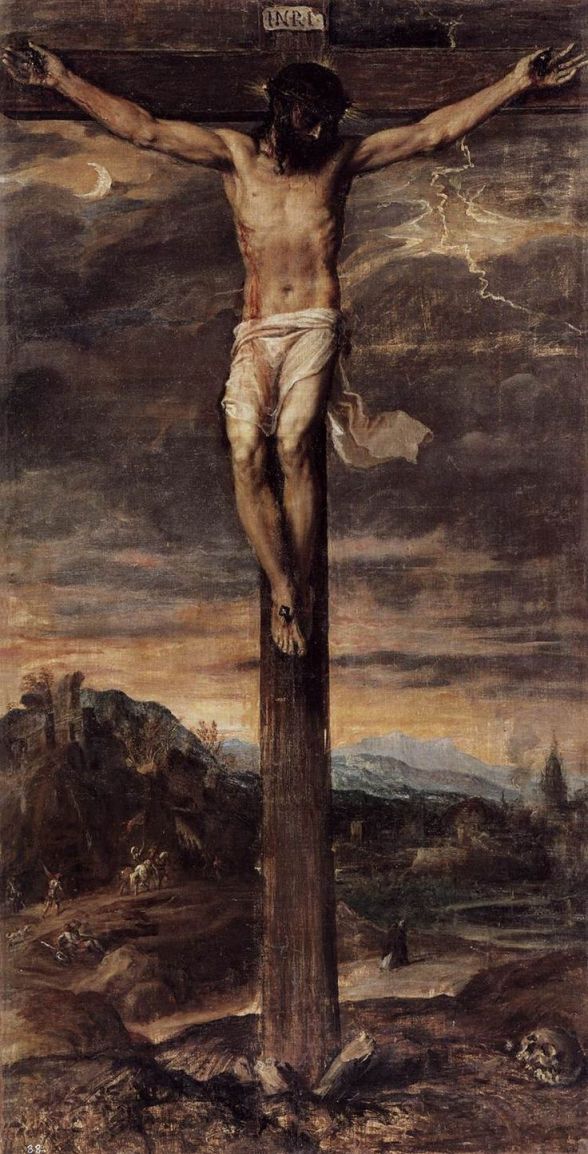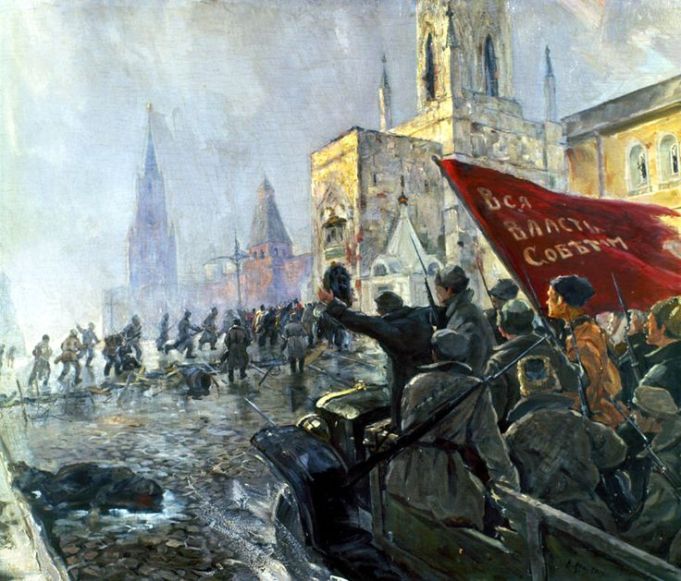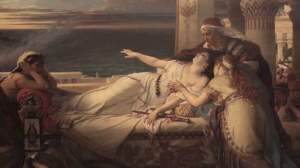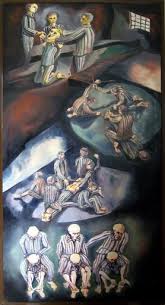
Heartbreaking Paintings and Poems from Communist Prisons in Romania — II
DAYS
by
Radu Gyr
Tuesday, Wednesday, Saturday, Monday
Neutral days without form,
Like a great fog
Over the landscape
Good morning, prison cell!
Good night, prison bars!
I’d smash you as a mastiff in his fangs
I’d rend you with my teeth, O Cell!
I stand in Time terribly naked
With my soul planted in liquid eternity,
Like an atoll in an ocean
Beaten by torrid winds…
Dungeon, dungeon, mad fortress,
How my hate would set fire to you!
Life, life outside,
How dare you dance in my dreams like a puppet!
Tuesday,Wednesday,Friday – what day is it?
the week is a dead amassment;
My months pass through no calendar,
My island is on no map.
Monday, Wednesday, Thursday – The devil take you!
Stinking days – Stagnant days,
Here in the jaws of eternity
Who shall count your dark hundreds?

HUNGRY
by
Nichifor Crainic
If ever I was a cluster of grapes,
today I am residue left by the press.
Into the fathomless hunger in me
pour some drop of juice.
I feel how my body is melting away,
a soup of amaranth would warm it.
If touched by a blade of grass
in a flash I’d be green.
At least let my phantom arm
pick an apple from a tree.
It will fill my mouth with aroma
and I would truly live.
In the country of sheep folds and bread
I dream of mushroom soup.
Let me shelter with the dogs
near the heaven of a bowl of terci.*
On the depth of my hunger
blind deserts open up.
When the last spoonful is eaten
I drop over my bowl and spoon.
O God, You Who
out of two fishes and five loaves
made mountains of food
and satisfied thousands of poor
Repeat the miracle, O Good One,
and satisfy thousands of mouths.
Listen also to my prayer,
Give me the basket of crumbs.
* terci – a thin gruel often given to dogs

JESUS IN THE NIGHT
by
Radu Gyr
This night Jesus entered my cell.
O how sad, how tall was Christ!
The moon followed Him into my cell
And made Him taller, sadder still.
He sat by me upon my mat;
“Put your hand upon my wounds.”
On His ankle there were scars from sores and rust
As if He too had worn chains once…
His hands were like lilies upon a grave,
His eyes as deep as forests;
His garments whitened by the moon,
Silvering in His hands old wounds.
Sighing, He stretched His weary bones
Upon my lousy mat;
In His sleep He shone forth, but the heavy bars
Lengthened upon Him like rods.
I rose from beneath my gray blanket.
“Lord, from whence come you? Out of which eternity?”
Jesus put His finger to His lips
And signed me to be still.
My cell seemed like a mountain peak;
Rats and roaches swarmed around;
I felt my head fall heavy upon my hand
And I slept, a thousand years…
When I awoke from my heavy trance
The straw smelled of roses;
I was in my cell and there was moonlight
But Jesus was nowhere.
“Where are you, Lord?” I cried between the bars.
Across the moon came drifts of mist…
I touched myself, and found upon my palms
The sign of His nails.

VISIT
by
Radu Gyr
The exhausted wind froze
like a bow on a cracked violin.
Last night an angel knocked in my door,
his voice weak, his tread tired.
I don’t know if he came from heaven
or some earthly cross
but he looked at me with wounded eyes,
trembling with cold when I welcomed him.
In his eyes of strange god
it was as if some grave illness battled
and he gazed at me with blood-filled eyes
and all that night he wept upon my breast.
In the morning I found him no more.
vestiges of red footprints faded from my door.
Far away in the sky on a cracked violin
the wind fell like a broken bow.


Poems from Communist Prisons by Mother Alexandra
Foreword
Within this booklet are a few poems originally written in Romanian, chosen from a large collection, POEZII DIN INCHISORI, edited by Zahu Pana, published by CUVANTUL ROMANESC, 1982
They were written or rather composed by political prisoners who had no paper on which to write. They were memorized by those who survived, and finally spirited out to the free West. Remarkable in that they are true poetry of the soul, they express various emotions of those unjustly imprisoned by the Communist Party, for the crime of independent thought. None of these poets were criminals. They were philosophers, theologians (lay or clergy), generals, intellectuals of all sorts, factory workmen and tillers of the soil. Women and even children shared the same fate.
Source: https://orthodoxyinottawa.wordpress.com/poems-from-communist-prisons/
And http://www.romanianstudies.org/content/2012/11/poetry-in-translation-cxlvi-sergiu-mandinescu-1926-1964-romania-prison-warder-suflet-de-calau























